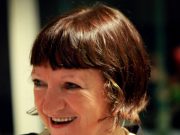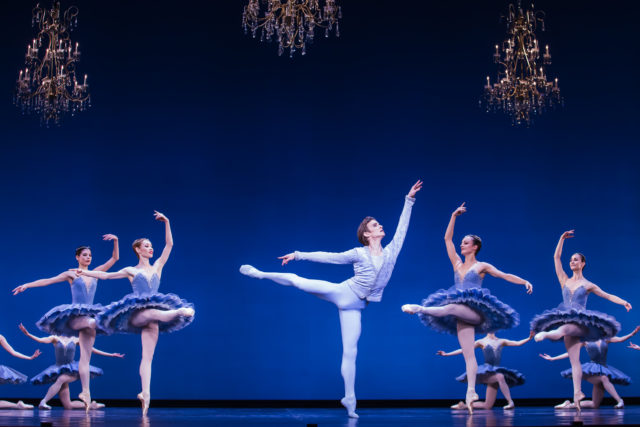
BERLINO – Sabato 11 gennaio, presso lo Staatsoper Unter den Linden, lo Staatsballett di Berlino ha ripercorso la storia della danza presentando tre coreografie firmate da alcuni tra i più grandi coreografi del XX e XXI secolo: Theme and Variations (1947) di George Balanchine, The second detail (1949) di William Forsythe e Oval (2019) di Richard Siegal.
Theme and Variations, del grande maestro russo, è un balletto sul movimento finale della Suite per orchestra n. 3 in G, Op. 55 di Tschaikovsky. In un crescendo di difficoltà, lo Staatsballett – guidato da Ksenia Ovsyanick e Dinu Tamazlacaru – si cimenta in complicate variazioni eseguite con grande precisione e grazia. I ballerini si esibiscono in una successione di brevi quadri coreografici messi in risalto dallo sfondo azzurro e dalla luce di sontuosi lampadari di cristallo. Con leggerezza ed eleganza si muovono sul palco in una sequenza a catena che da vita a delicati intrecci, per poi lasciare spazio ad avvincenti virtuosismi che conquistano il pubblico.
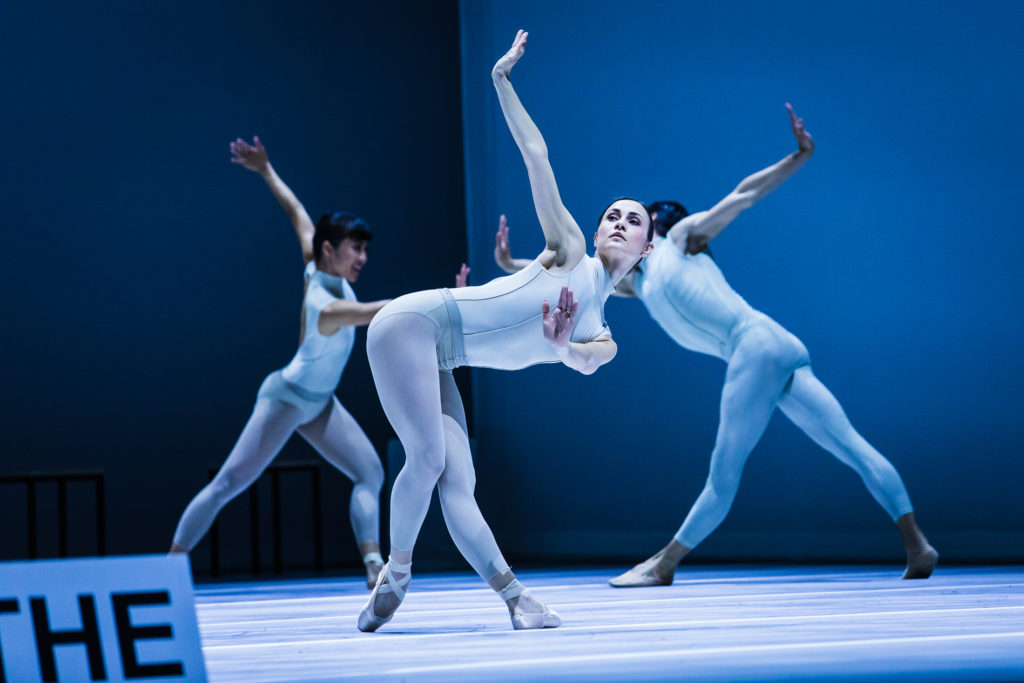
Ph Yan Revazov – Forsythe
The second detail, di William Forsythe, rappresenta un’evoluzione del precedente pezzo in una chiave contemporanea. In questa coreografia c’è una diversa concezione dello spazio che viene usato in ogni fronte e direzione, un diverso uso delle braccia e della schiena, una dinamica, anche ritmica, più variegata e una rottura dei ruoli maschile/femminile a favore di una diversa idea di ballerino, che qui diventa uno strumento a servizio della coreografia, un corpo che determina il movimento e da vita allo spazio.
Come su una scacchiera, ogni danzatore occupa un punto sul palco che cambia incessantemente in un meccanismo che genera un vortice costante di energia, un caos ordinato e perfetto.
Lo spettacolo è veloce ed avvincente ed è interessante vedere come i danzatori si muovano sul fondale, come se non fossero più in scena. Si siedono su alcuni sgabelli e diventano spettatori della performance di cui sono al contempo protagonisti.
Verso la fine, questa complessa architettura trova un ulteriore e inaspettato elemento di rottura con l’arrivo di una donna, forse un’amazzone o una dea che, in contrapposizione con il controllo di chi la circonda, si lascia andare a una danza selvaggia e libera, che accompagna lo show sino alla sua conclusione.
Ultimo pezzo ad andare in scena è Oval, di Richard Siegal.
Lo spettacolo, sin dall’inizio, proietta lo spettatore in una dimensione spaziale. Il grande ovale di luce di Matthias Singer, vero elemento innovativo del lavoro di Siegal, ricorda, infatti, un anello planetario.
Molto belle le corse dei danzatori dai due fronti opposti verso il centro del palco, dominato dall’installazione di luce che mette in risalto solo alcune parti del corpo dei ballerini. Per il resto, se il contributo di Matthias Singer e la musica di Alva Noto rendono Oval uno spettacolo ‘futuristico’ e suggestivo, le coreografie firmate da Siegal, pur esaltando le capacità tecniche dei membri dello Staatsballett, non risultano più moderne di quelle del suo maestro Forsythe.
Serata di grande successo per lo Staatsballett che, se in alcune occasioni non incarna esattamente lo stile del coreografo ospite, in questo caso è assolutamente all’altezza del difficile compito.
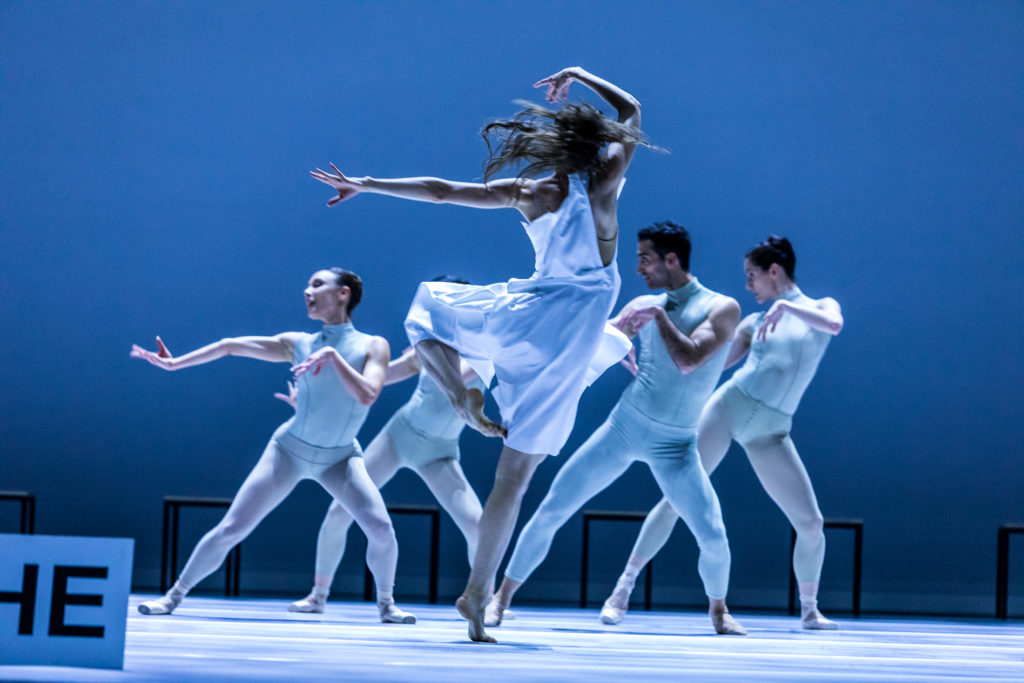
Ph Yan Revazov – Forsythe
Saturday January 11th, at the Staatsoper Unter den Linden, the Staatsballett Berlin retraced the history of dance by presenting three choreographies by some of the greatest choreographers of the 20th and 21st centuries: George Balanchine’s Theme and Variations (1947), The second detail (1991) by William Forsythe and Oval (2019) by Richard Siegal.
Theme and Variations, by the great Russian Maestro, is a ballet accompanied by the Orchestral Suite No. 3 in G, Op. 55 final movement, by Tschaikovsky. With the level of difficulty in crescendo, the Staatsballett – led by Ksenia Ovsyanick and Dinu Tamazlacaru – engages in complicated variations performed with great precision and grace. The dancers perform in a succession of short choreographic frameworks highlighted by the blue background and the light of sumptuous crystal chandeliers. With lightness and elegance they move on stage in a chain sequence that gives life to delicate weaves, then leaving the room with compelling virtuosity that conquers the audience.
The second detail, by William Forsythe, represents an evolution of the previous piece in a contemporary key. In this choreography there is a different concept of space, the dancers move and faces every direction and angle, there is a different use of the arms and back, a more varied dynamic, even rhythmic, and a breaking point in male/female roles in favour of a different idea of the dancer who becomes an instrument through which the choreography is accomplished; a body that determines movement and gives life to space.
As with a chessboard, each dancer occupies a point on the stage that changes incessantly in a mechanism that generates a constant vortex of energy, an orderly and perfect chaos.
The show is fast and compelling and it is interesting to see how the dancers move at the back, as if they were no longer on stage. They sit on some stools and become spectators of the performance of which they are at the same time protagonists.
Towards the end, this complex architecture finds a further and unexpected element of rupture with the arrival of a woman, perhaps a goddess who, in contrast to the control of those around her, lets herself go into a wild and free dance, which accompanies the show until its conclusion.
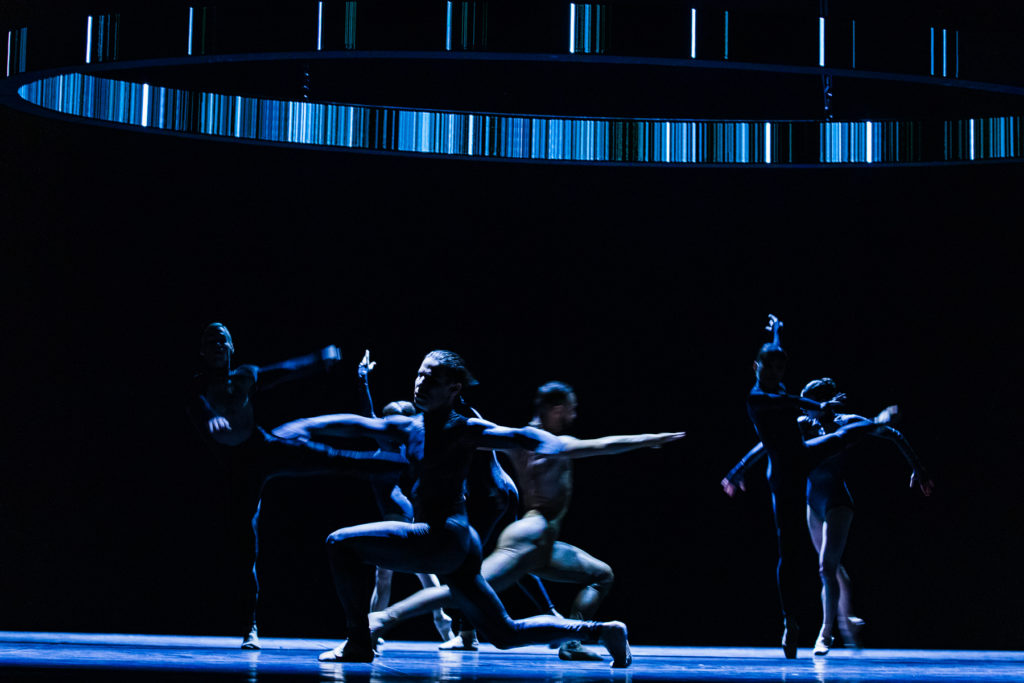
Ph Yan Revazov – Siegal
Oval, by Richard Siegal, is the last piece to be performed.
The show, from the beginning, projects the viewer into a spatial dimension. The large oval form made of lights by Matthias Singer, the true innovative element of Siegal’s work, perfectly conjures the image of a planetary ring.
The way the dancers run from the two opposite sides of the stage towards the center is very beautiful. They stand under the light installation that highlights only some parts of their bodies. If Matthias Singer’s contribution and Alva Noto’s music make Oval a ‘futuristic’ and suggestive show, the choreographies by Siegal, while enhancing the technical skills of the Staatsballett members, are no more modern than those by his master Forsythe.
A very successful evening for the Staatsballett which, even though, on some occasions, does not exactly embody the style of the guest choreographer, in this case, absolutely lived up to the difficult task.







